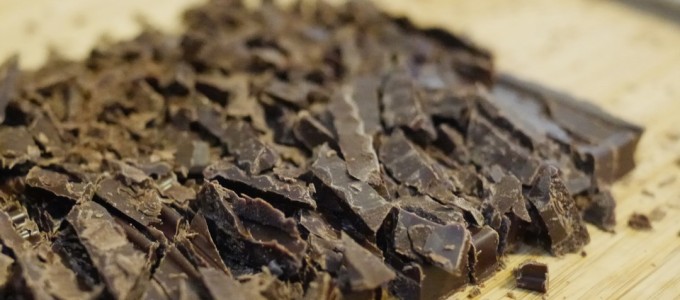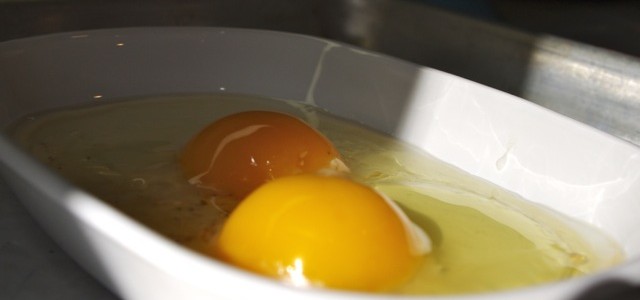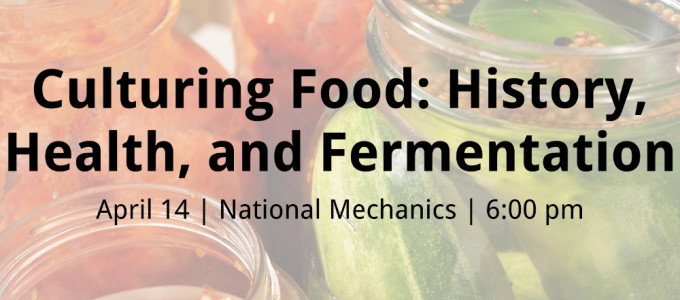Kind of, sort of, you may consider this a follow-up to my previous post about the rhetoric and logic of why people ferment. Two of the folks who I’ve interviewed for this project — one a very old friend, and one a fairly recent one — both had some very interesting observations about why they make pickles, and why other people do too. To a certain degree, they engage with some of the reasons bloggers lay out for pickling — fermentation as tradition, environmental consciousness, health, etc. — but when I said before that those rhetorical moves are far from comprehensive — well — I think you’ll see what I mean. Just read.
Technique
Peachy Mead
Just when I thought I was out, the mead keeps pulling me back in.
It was less than a month ago, now, that I bottled last year’s strawberry melomel. With Sarah’s invaluable help, there was a flurry of sanitizing and syphoning, filling, corking, cleaning, and trundling boxes of bottles down into the basement.
The strawberry mead came out just right: pale pink, with a definite and delicious fruit flavor, and a hint of oxidation that adds toffee complexity at the back end of every sip. It will need to age for a year or two. It’s still a little hot, alcoholically speaking. But I’m pleased. No doubt — one of the better meads I’ve made.
Tempering Chocolate Using the Seed Method
Tempering chocolate used to drive me crazy. There were several years there where I’d make chocolate dipped shortbread to send around to friends and family as gifts for the holidays. I would grit my teeth, pull out my electronic thermometer, marble slab, and heating pad, then fuss with getting my chocolate up to 130F, then down to 88F, then back up — just a hair of a hair, mind you — to the point of liquidity.
Achieving and maintaining those precise temperatures required constant vigilance. It always made a huge mess. And half the time, despite my best efforts, I missed my marks anyway, and my chocolate-dipped treats turned out streaky and waxy and gross, and totally unfit for service in yuletide care packages — or anywhere else.
Roast Chicken, Questions and Answers
So I’ve been looking back at the Twice Cooked archives, folks, and here’s a thing that really surprises me: given just how much chicken I cook — and specifically, given just how many whole chickens come through my house — I am shocked to find that the only thing I’ve ever written about roast chicken comes from way back in 2009, from the Livejournal carry-over prehistory of the blog.
This is a major oversight on my part. And today, I intend to remedy it.
My Favorite Mayonnaise
Here’s the deal with mayonnaise: it should not be shelf stable at room temperature. I stare out at a landscape painted gloppy white with Hellman’s, with Best Foods, with — *shudder* — Miracle Whip, and I wonder not at all why I’ve passed on the mayo for most of my life.
Mayonnaise is a raw egg emulsion. Raw. Egg. Emulsion. Nothing about those three words implies that processing it such that it can live next to the tinned beans is in any way okay. And whatever process gets used to make it okay, I imagine, must be the same one that drains it of all its joy and savor.
Mayonnaise is one of the classic French sauces, people. It should taste better than this.
And it can. Making it at home takes about ten minutes in total. You can flavor it how you want. And once you eat the real thing, you’ll never, ever want to go back.
This is my favorite variation:
1/2 cup Extra Virgin Olive Oil
1/2 cup Vegetable Oil
1 Egg (fresh as you can manage — this is a raw-egg kind of deal)
1 Clove of Garlic, crushed and minced
1/2 tsp Dried Tarragon
Juice of Half a Lemon
Dash of Hot Sauce (it brightens the flavor)
Pepper
Salt
To a four-cup Pyrex, add the egg, garlic, tarragon, pepper, and a little salt, and whip on high with an electric beater. While you’re whipping, very slowly drizzle in the oil, allowing time between each drizzle for it to fully incorporate. By the time you’ve incorporated about half the oil, you should notice the mayonnaise thickening. By the time it’s all in, you’ll find it has a slightly thicker consistency than what you find in a jar.
When all the oil has been incorporated, add the lemon juice and hot sauce, mix thoroughly, and then add more salt to taste. Cover, and refrigerate for at least two hours before serving to give the flavors time to gel.
Like I said, this is a raw egg emulsion. So while it will taste — like — a bazillion times better than the mass produced stuff, you may still want to skip it if you’re immunocompromised.
(I’ve offered a similar recipe before here. But this one is better!)
Culturing Food: History, Health & Fermentation
Before we start, here is what you need to know about me. Though this is indeed Science on Tap, and though I was indeed invited here by the College of Physicians, I am neither a scientist nor an M.D. I am a food blogger, a folklorist, a historian, and — if anything — a fermentation enthusiast. This means that what I am interested in is people — how people use fermentation, how they have used it in the past, and how it works as a technology that improves quality of life, and the flavor and longevity of whatever it is folks are eating.
Fermentation is a bit of a popular topic right now. Alternet, the online indy reporting outfit and sometime light-news rag, called it their number one top food trend of 2013. In December of last year, they wrote:
Spring Workshop: Pickling Without Pasteur, Part II
People! Philadelphia People, especially! Pay attention!
I am pleased to announce that, because it was such a hoot in the fall, I will be rerunning my pickling workshop — Pickling Without Pasteur — this spring. Thanks to the Mount Airy Learning Tree, on Saturday May 3rd from 10am to noon, we will be gathering in the Unitarian Society of Germantown’s kitchen to talk about the biology and methodology of lacto-pickling, and then to make copious quantities of delicious pickles which participants will get to take home in jars.
Baked Eggs, for this or any century
Dear readers, I will be candid: I would really prefer to live some hundred years ago. I would settle for 80, even. Or 120. For all its benefits, including refrigeration, antibacterial agents, and your esteemed selves, the modern age lacks a certain cozy charm to be found now only between the yellowing pages of novels: scenes of tea and toast before the fire, embroidered slippers, long hours of novel-reading, acrostics, baked apples, baked eggs, floral wallpapers, lemon-scented barley-water, candied violets, kippered herring, crumpets, puddings in the nursery…. It is not perhaps surprising that my interest centers on foods, fabrics, and the fireside. I confess that I have tried to recreate that coziness in my modern life. I bake apples. I cook kippers. I light fires at the slightest chill. I rest my feet on an embroidered footstool, and the quantity of novels lying about suggests more leisure time than I actually possess.
Coming Soon to Philadelphia’s Science on Tap
I am pleased to announce that — thanks to the generous patronage of The College of Physicians of Philadelphia and Mütter Museum, and thanks to my thoughtful friend Anna — I will be the featured speaker on April 14 at Philadelphia’s Science on Tap.
If you don’t know, Science on Tap is a monthly gathering at Philly’s National Mechanics bar and restaurant in which folks wander in to drink good beer, eat good food, and listen to an informal presentation by a scientist or other expert followed by lively conversation. The goal, say the Science on Tap folks, is to promote enthusiasm for science in a fun, spirited, and accessible way, in the sort of venue where people are at their most relaxed.
Blue Hubbard Squash Purée
Pumpkin pie, dear readers, is one of my favorite autumn treats. But suspect squash purée, excavated from a sealed tin can labelled with a happy turkey, or a beaming grandmotherly face, or some other graphic designed to distract from the disturbing vagueness and small print of the tin’s actual ingredient list is a thing I find somewhat less agreeable. I’ve mentioned here before that dairy — like sweetened condensed milk — that is designed to be stored at room temperature disturbs me. And pumpkin glop is another one of those things that fits into the same general category in my mind.
Luckily, there is a way to produce squash purée that does not involve a can opener. And while it admittedly takes more time, it is hardly an arduous task.








